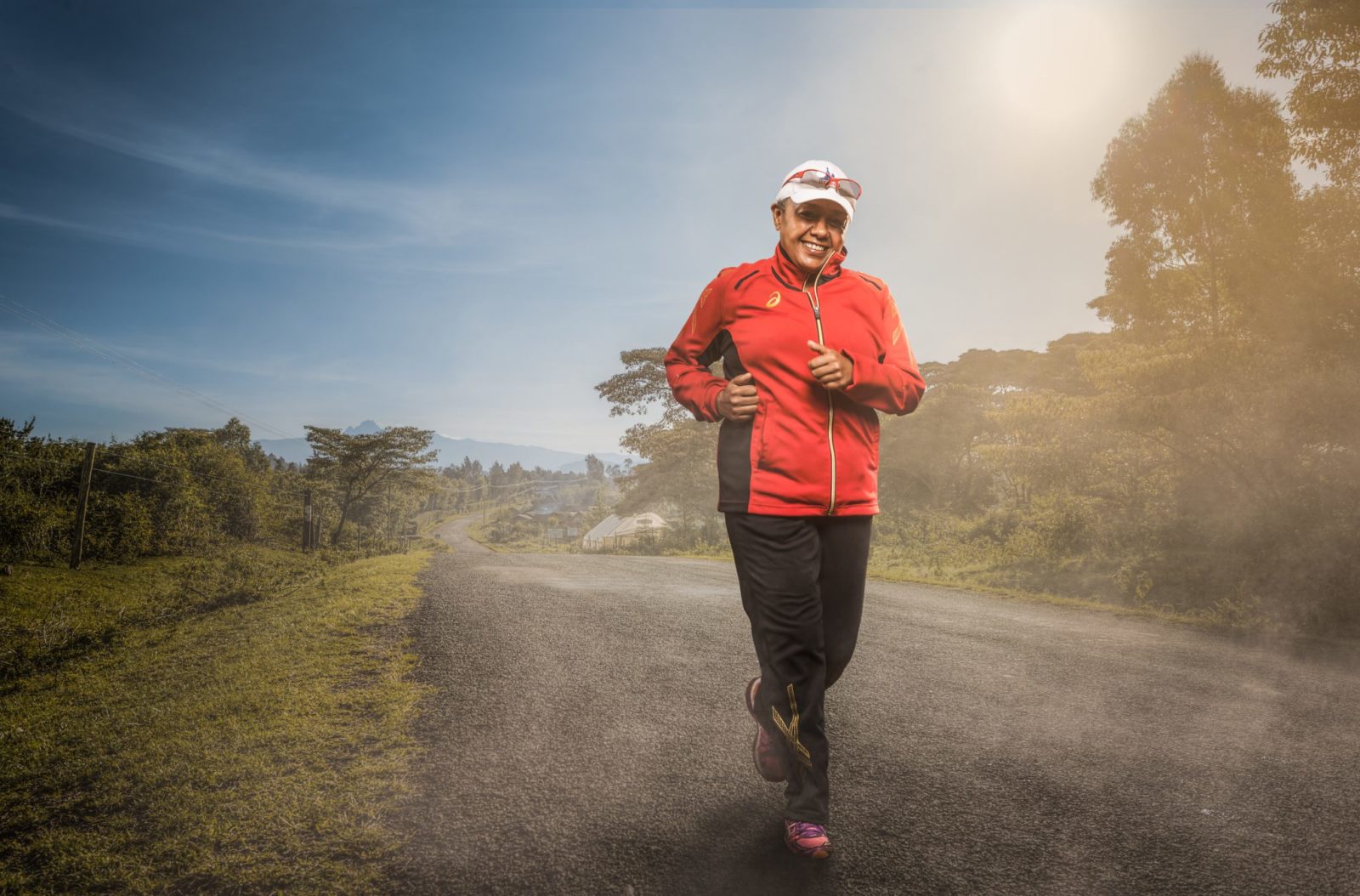It was a cold morning in April, two weeks before the 2014 London Marathon. I was ready to take on the steep slopes of Mount Kenya near the town of Sagana, 210 kilometers from Kenya’s capital Nairobi.
Stretching and warming up, I eagerly waited to join Kenya’s First Lady Margaret Kenyatta at this high-altitude training camp. And when she showed up, what was meant to be a light 13 kilometer jog left me with a wonky knee and a sore back. By the time we reached the finish line, my body had given up.
But the first lady? At least once, I thought she would give up too, but the sprightly 50-year-old was more focused than anyone I had seen.

Her focus was the streets of London, where she would take part in the 42 kilometer London Marathon, not to become yet another long-distance Kenya runner, but to promote a cause close to her heart. The cause: the ‘Beyond Zero Campaign’, a fund-raising initiative aimed at improving maternal and infant health in Kenya.
Loading...
According to UNAIDS, in Kenya, as many as 5,500 women die annually due to pregnancy-related complications, and more than 100,000 children die every year by the age of five. Twenty percent of maternal deaths in the country are AIDS-related. The ‘Beyond Zero Campaign’ aims to improve maternal health care by ensuring accessibility to health facilities through mobile clinics, and prevention of mother-to-child disease transmission.
“There is simply no good reason why thousands of women and children in Kenya should die during child-birth today. This is unacceptable,” says Kenyatta.
“These are not just statistics. These are our fellow Kenyan sisters and children who die largely as a result of pregnancy and HIV-related complications that are preventable. It is just not acceptable with such worrying statistics to sit back and watch. This concerns the future of this nation, we had to take action.”
As in many African countries, Kenyan women face challenges in accessing healthcare facilities. Most of them have to travel long distances for them. The funds raised by ‘Beyond Zero’ will assist in the provision of mobile clinics, incubators, diagnostic kits for early infant testing of HIV, and oxygen concentrators.
“As a mother myself, it is worrying, it is heart-breaking. It is unnecessary for children to die through lack of medicine. I will do what I can to help,” says Kenyatta in her campaign message.
The campaign is targeting a total of $5.7 million and the first lady chose a marathon as a means to raise the funds.
“Marathon-running is a very Kenyan thing. As Kenyans, we are the undisputed kings and queens of road running. This is something that pushed my limits and took me out of my comfort zone, and something that has got Kenya and the world paying attention,” she says.
In March, she participated in the inaugural First Lady’s Half Marathon, a 21 kilometer race in Nairobi for the ‘Beyond Zero Campaign’. She then decided to take the cause to the world stage by participating in the
London Marathon.
The first lady finished the race in seven hours. At the finish line was her husband, Kenyan President Uhuru Kenyatta, waiting to receive her.
As expected, the Kenyans came tops in both the men’s and women’s elite races, with Wilson Kipsang (2hr 4min 29sec) and Edna Kiplagat (2hr 20min 21sec) taking first positions respectively.
No wonder the first lady completed the race with no qualms. She had trained with some of the world’s finest athletes, including Kipsang who is also the World Marathon holder and Florence Kiplagat, the World Half Marathon holder.
Her team trainer is also one of the world’s champions, Douglas Wakiihuri. He won the 1987 World Championships in Athletics, the London Marathon in 1989 and the New York Marathon in 1990.
Wakiihuri was returning to London 25 years later at the age of 50, but this time for the course that he shared with the Kenyan first lady. He prepared her mentally and physically.
“We trained in a camp, same as the Olympic one. Her mental preparedness is basically that of an elite athlete which is very special,” said Wakiihuri of the first lady’s preparedness.
What made it even more commendable was that she was running and training for the first time.
“It has not been easy because none of my team members has run before. It’s very new for us and we are not that young,” says the first lady.
The team started training in November, walking at first, then jogging slowly before picking up pace. The challenges were waking up in the wee hours for intensive training and being away from their families. In the end, it all paid off.
Loading...
